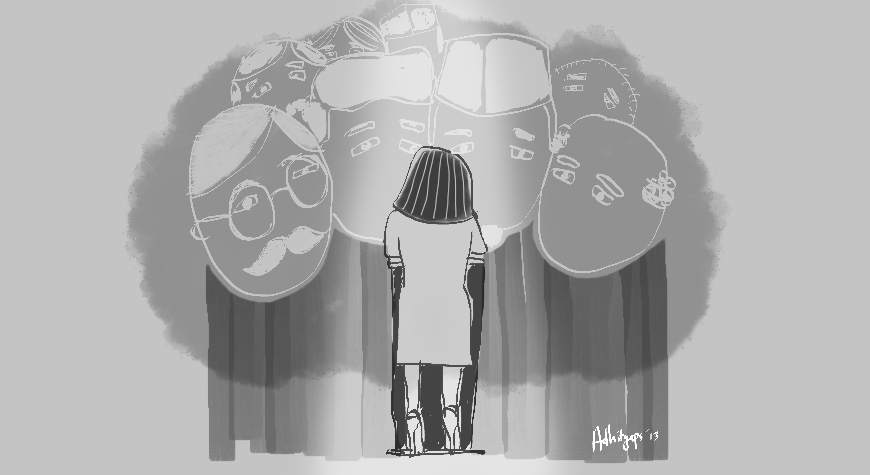What does it take for more Indonesian women to go into politics?
With the election year approaching, male candidates are set to dominate the race for the presidency. The only female contender of the last two elections, former president Megawati Soekarnoputri, does not seem keen on running again in 2014. She has instead expressed her Indonesian Democratic Party-Struggle’s (PDI-P) support for Jakarta Governor Joko Widodo, who is leading the popularity polls so far. The rest of the would-be presidential candidates are men.
The presidential convention run by the majority Democrat Party (PD) would have made a good political arena for women to contest the 2014 election. But all the 11 participants, including some party cadres and non-party members, are men. The only woman invited to join the convention, former Central Java Deputy Governor and a PDI-P cadre Rustriningsih, has refused to participate.
The party has its own women cadres, but Convention Committee Secretary Suadi Marassabesy was quick to note that no woman within the party was considered capable for the convention. While this may imply that the party has failed to educate its female party members, it highlights the problem of low women representation in the country’s politics.
Indonesia has actually introduced a 30 percent quota for female legislative candidates in 2003. Opposed by political parties in the beginning, the law has successfully increased women’s representation in parliament to 11.3 percent and 17.8 percent in the 2004 and 2009 elections respectively, compared to an average of 9 percent previously. Though an encouraging rise, this is still far from the ideal 30 percent. It also means most voters do not vote for women candidates.
Political parties complained that the affirmative action was not helping because there are simply not enough eligible women to fill the position. They recruit many women for legislative candidates to meet the quota regardless of their qualifications and electability.
When parties do nominate female figures with higher electability, they usually come from the entertainment business—including popular singers, comedians, actresses—not necessarily for their qualifications but to bring votes to the party.
While this pragmatic approach is not entirely wrong, the parties’ winning strategy without so much as investing in proper political education means the public is being denied their chance to choose female representative of quality.
The problem is there are many women who are capable of running for office and even potentially win a free and fairly held election, but most shy away from politics.
A number of studies conducted on this phenomenon found, among others, that women appear to be disinterested in politics because they prefer secure jobs that keep them close to home. The private role of women as a mother and caregiver in their family, added with the traditional perception on social propriety also hinder their participation in the public sphere. It is more acceptable, for example, for men to stay up late at night for “smokers’ discussion” at Balai Desa or the village forum than it is for women.
In 2011, Women and Politics Institute in Washington DC published a report of women’s underrepresentation in the United States’ politics. They listed some factors that hinder women’s participation in elective office, among them these:
1. A perceived competition and biases in the electorates demotivate women from entering politics.
2. More attention are given on women’s appearances than on their political campaign ability.
3. Fewer women think they are qualified to run.
4. Women are perceived as being less competitive, less confident and more risk averse.
5. Women are not seen as being comfortable to conduct fundraising, contact voters, deal with the media and engage in negative campaign.
6. Women are less likely to receive suggestions to run, making them unaware of their leadership capability.
7. Women are still responsible for the majority of childcare and household tasks, making it difficult to keep their private life in balance when they hold a public post.
Given all the hindrances, tools for supporting women in politics is necessary, and some organizations have begun to publish materials for this. Among the recent publications on this issue are Yayasan Jurnal Perempuan’s module for Women Entering Politics (2006) and Political Education Guide for Women by Liga Inong Aceh and Friedrich Ebert Stiftung (2009). The United Nations Development Programme and National Democratic Institute translated to Indonesian a book titled Empowering Women for Stronger Political Parties (2011). Publishing political education books directed for women can help raise women’s active political participation and drive their electability.
Political parties play an important role in educating their women cadres. If, like the Democrat Party, the parties feel they lack qualified female candidates, they have to invest more in political education for women and encourage the existing good ones to enter politics as early as possible. Only through experiences and giving them exposures, these women candidates can be developed into great politician and become assets for the future.
Indonesia’s first and last female president Megawati only rose to power in 2001 after President Abdurrahman Wahid received a vote of no confidence from Parliament, leaving the top seat vacant for her as his deputy to take over. But her efforts to win the subsequent two elections in 2004 and 2009 have failed.
How long will it take before Indonesia has another woman president or woman parliament speaker? It may not come so soon, but let’s hope that come next year Indonesian voters will bring more qualified women into Parliament.
The writers are scholars of S. Rajaratnam School of International Studies, Nanyang Technological University, Singapore.








Comments